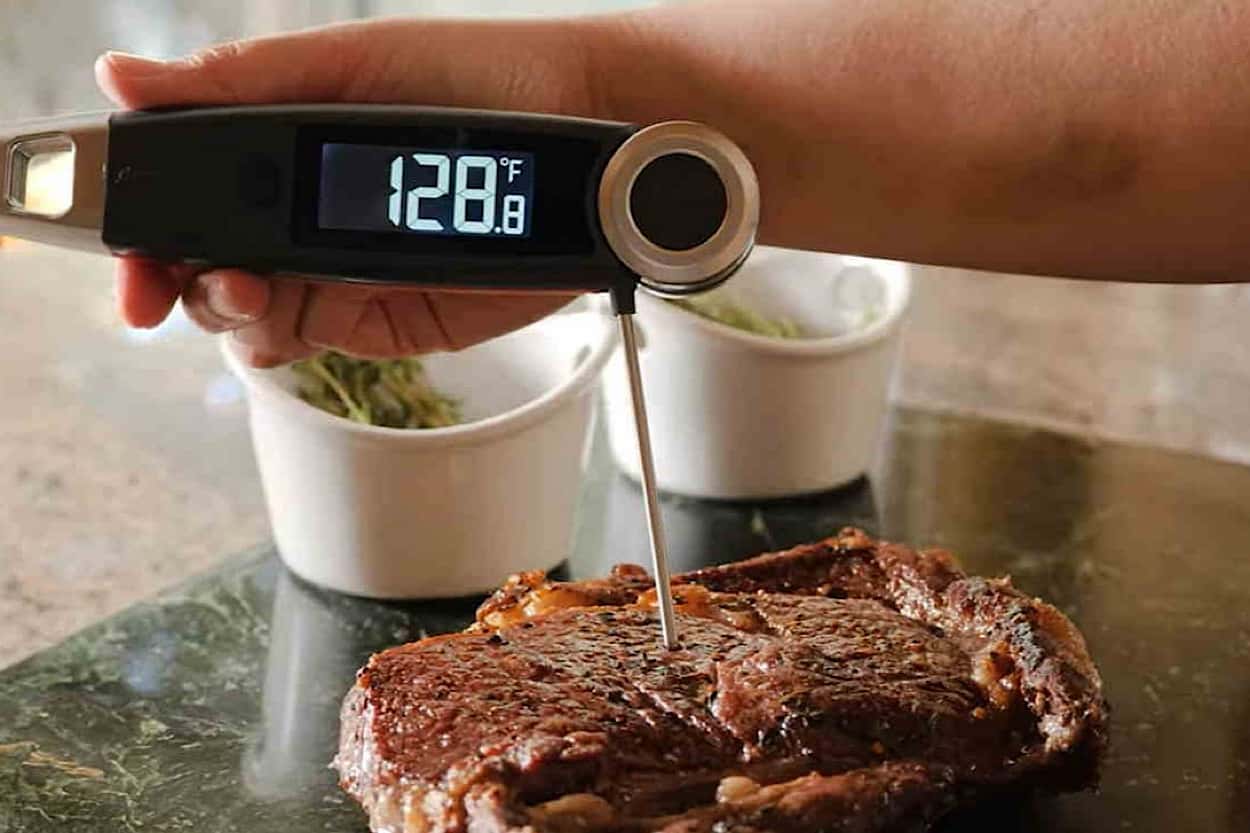
Tips For Cooking With A Food Thermometer
Thermometers take the guesswork out of cooking, help to ensure food safety, and give you peace of mind. But novice cooks might not know how to properly use this tool to improve their cooking. To start with, there are several types of food thermometer to choose from. How do you use these different types of thermometers? In this guide, you will learn some basic tips for cooking with a food thermometer.
Table of Contents
Tips for Cooking with a Food Thermometer
Tip 1: Know the different types of food thermometer
As said earlier, there are different types of kitchen thermometers out there, and they are created for different purposes. Thus, they have different uses for different types of cooking and food products.
All-purpose thermometers
All-purpose thermometers are your all-around thermometers. It’s the kind of thermometer you get for a wide range of cooking. They come in analog and digital forms and can read a wide range of temperatures, making them quite a useful tool in the kitchen. They’re commonly used for baking and deep-frying.
They read temperatures through a pointed probe that you insert into the center of the food. Some can read really high temperatures. The basic ones with the analog reader, however, don’t work at high temperatures, such as those needed for making candies.
Candy thermometers
These usually used for baking and reading really high temperatures of hot sugar syrups, marshmallows, caramels, chocolate tempering, cooking preserves and jams, and of course, candy making. They come in different varieties, but they all do the same thing – since most candies start with a common ingredient – sugar – this thermometer is best for reading the temperature of softball or hard crack sugar. Knowing the correct temperature is the key to making candies. Because of their ability to read very high temperatures, they are also commonly used for deep-frying.
This type of thermometer usually comes with clips (to clip onto the side of the pan and pots) so you won’t have to constantly keep an eye on the temperature while doing other tasks. They are long and skinny and don’t come with probes.
Meat thermometers
As its name suggests, meat thermometers are specially designed for measuring the temperature and the doneness of meat. Different levels of temperature correspond to different levels of doneness, like rare, medium-rare, well-done, etc. This type of thermometer is inserted into the thickest part of the meat before it’s cooked and remains in the meat throughout the cooking process.
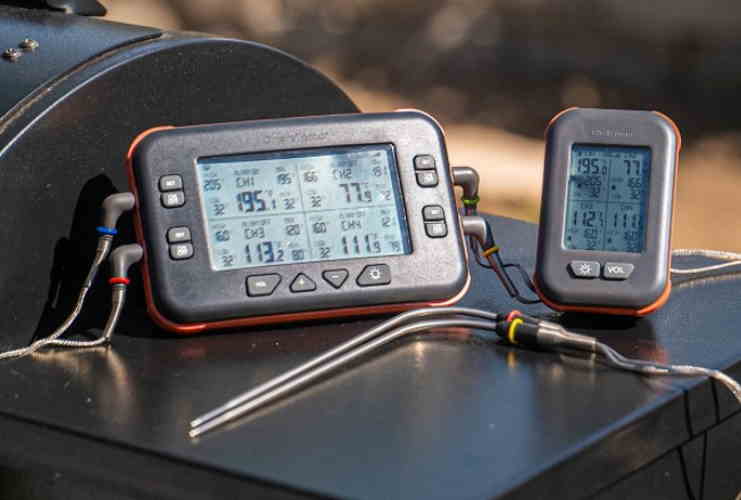
Appliance thermometers
These are the thermometers that come with your appliances, such as the oven, fridge, and freezer. They make sure your appliances are running at the precise temperature that you want them to be.
Tip 2: Calibrating and testing your thermometers
A thermometer’s job is to provide you with accurate temperature readings. If it’s anything shorter than that, it’s not useful for you. Test the thermometer by starting at the lowest temperature point – place it on a bowl of ice water. It should read 32°F. You can also place it on boiling water and it should read 212°F. To get an accurate reading, let it sit for at least 30 seconds.
If the thermometer shows a different reading, check the manufacturer’s instructions on how to calibrate it. Better yet, get a new one.
Tip 3: Learn how to use different thermometers properly
Different thermometers are made for different purposes, and different types of food are tested differently.
Candy Thermometers
Candy thermometers are used for measuring extremely high food temperatures (up to 400°F). This is because, unlike in cooking meat, you cannot stick your finger to hot sugar. They are best for making different types of candies, both hard and soft, such as brittle, fudge, praline, toffee, etc.
They are also used for making homemade sauces, syrups, and even for preparing oil for deep-frying.
Oven-going Meat Thermometers
Oven-going meat thermometers are the thermometers that you stick in the meat while cooking, grilling, or roasting. The best way to use this is to insert its probe at least two inches into the thickest part of the meat.
For most types of meat, you need to stick the probe into the center and the thickest part of the meat to get an accurate reading. Make sure the probe is not touching the bone, fat, or pan.
For poultry, like turkey and chicken, stick the probe into the part between the thigh and the rest of the body. This is the thickest part of the poultry meat, which also takes the longest to cook.
For burger patties, stick the probe sideways to get an accurate reading.
When the meat reaches the desired temperature, push the thermometer a little deeper into the meat. If the temperature drops, that means the meat needs further cooking. If the temperature stays the same, the meat is ready and you can remove it from the grill or oven.
There’s also a trendy type of thermometer available on the market that comes with a wired probe. Instead of the whole thermometer going inside the oven, the wired probe is inserted into the meat and the thermometer can be placed outside the oven. This is a convenient way to read the temperature since you can easily see it without opening the oven door and letting the heat from the oven escape, or watching through the window of the oven.
Most fresh meats cook at 160˚F, whether it’s beef, pork, lamb, veal, or even elk, moose, and caribou. If you want it well-done, it should be 170°F. If you are cooking leftover meat (properly stored and cooled of course), cook it at 165˚F.
Poultry meats such as ground chicken and turkey, whole chicken, duck, and goose cook at 165˚F.
Wait for the recommended amount of time for your thermometer to get an accurate temperature reading. For most meat products, such as beef, chops, pork, lamb, veal steaks, and roasts, it is best to get the reading before removing the meat from its heat source, both for quality and safety purposes.
Most instant-read thermometers aren’t actually instant-reads. They can read temperature faster than traditional thermometers, but you still have to leave them for 15, 20 to even 30 seconds to get the most accurate reading.
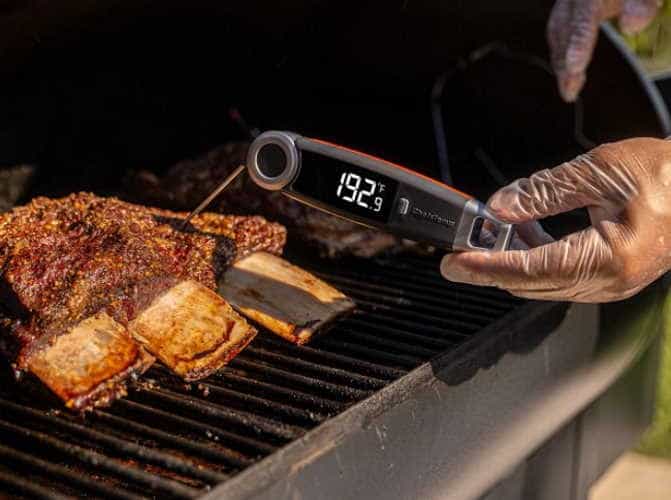
Tip 4: Always clean your thermometers
You don’t want to use grimy and rusted food thermometers with particles of food from the last time you used it, right?
Clean your meat thermometers immediately after use. Wash the probe using hot soapy water and wipe the rest of the thermometer clean to keep grease from building up.
For candy thermometers, remove sugar residue or caramel by clipping the thermometer to a pot of boiling water.
Use a food-sanitizing solution for cleaning your thermometers. For battery-operated thermometers, turn off the thermometer to save the battery.
5 Comments
Comments are closed.
Discover Other ChefsTemp Products
Discover more recipes and learn kitchen tricks by joining our cooking family on Facebook.
You may also like:
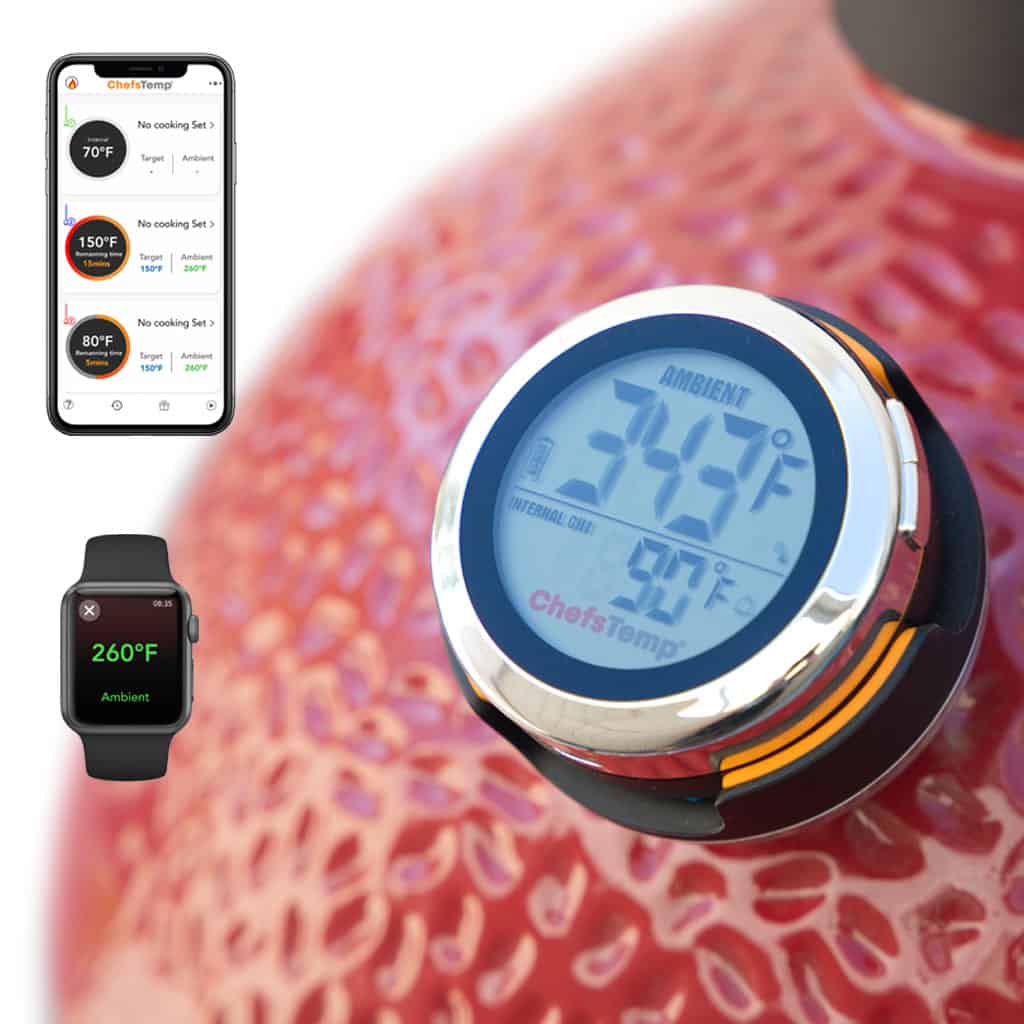
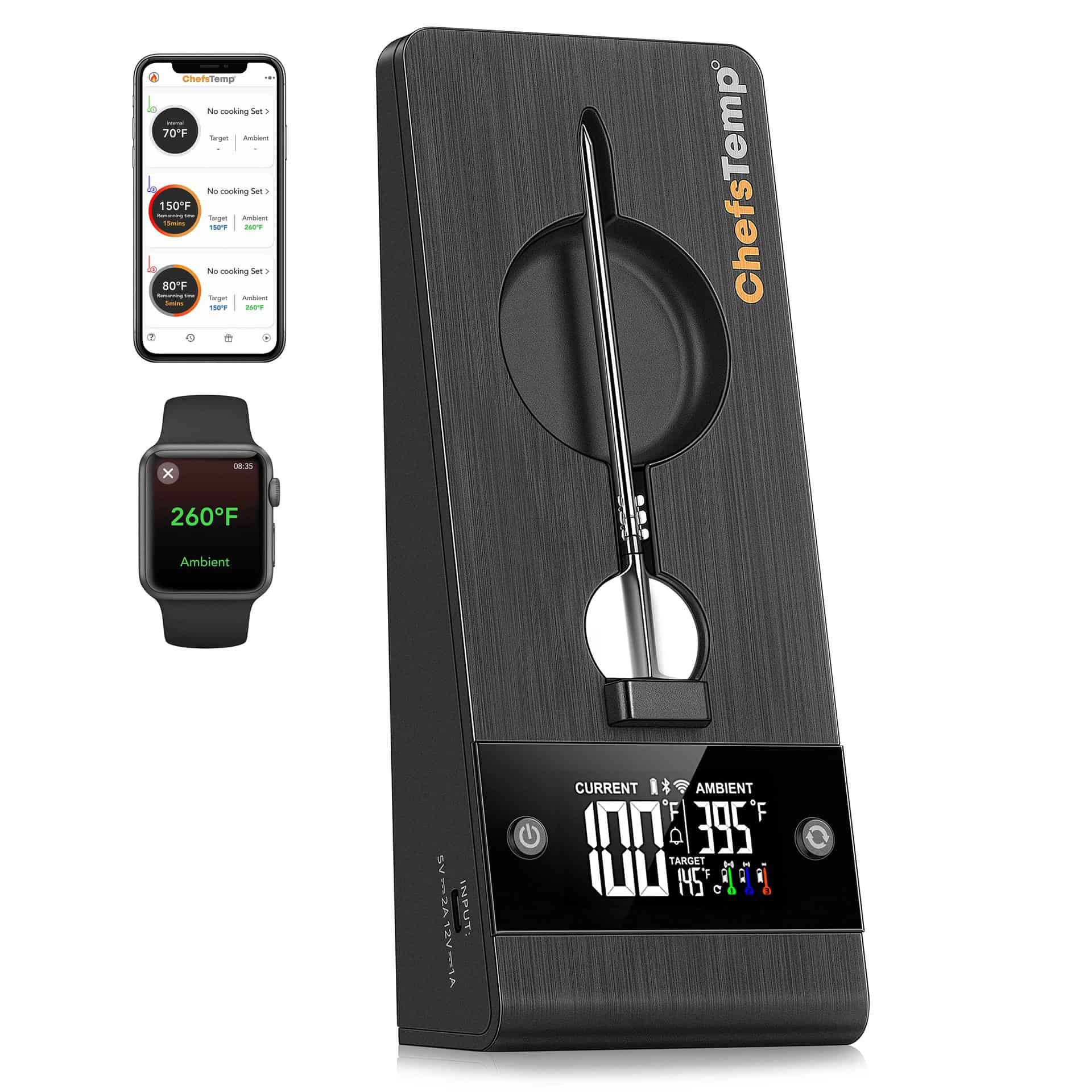
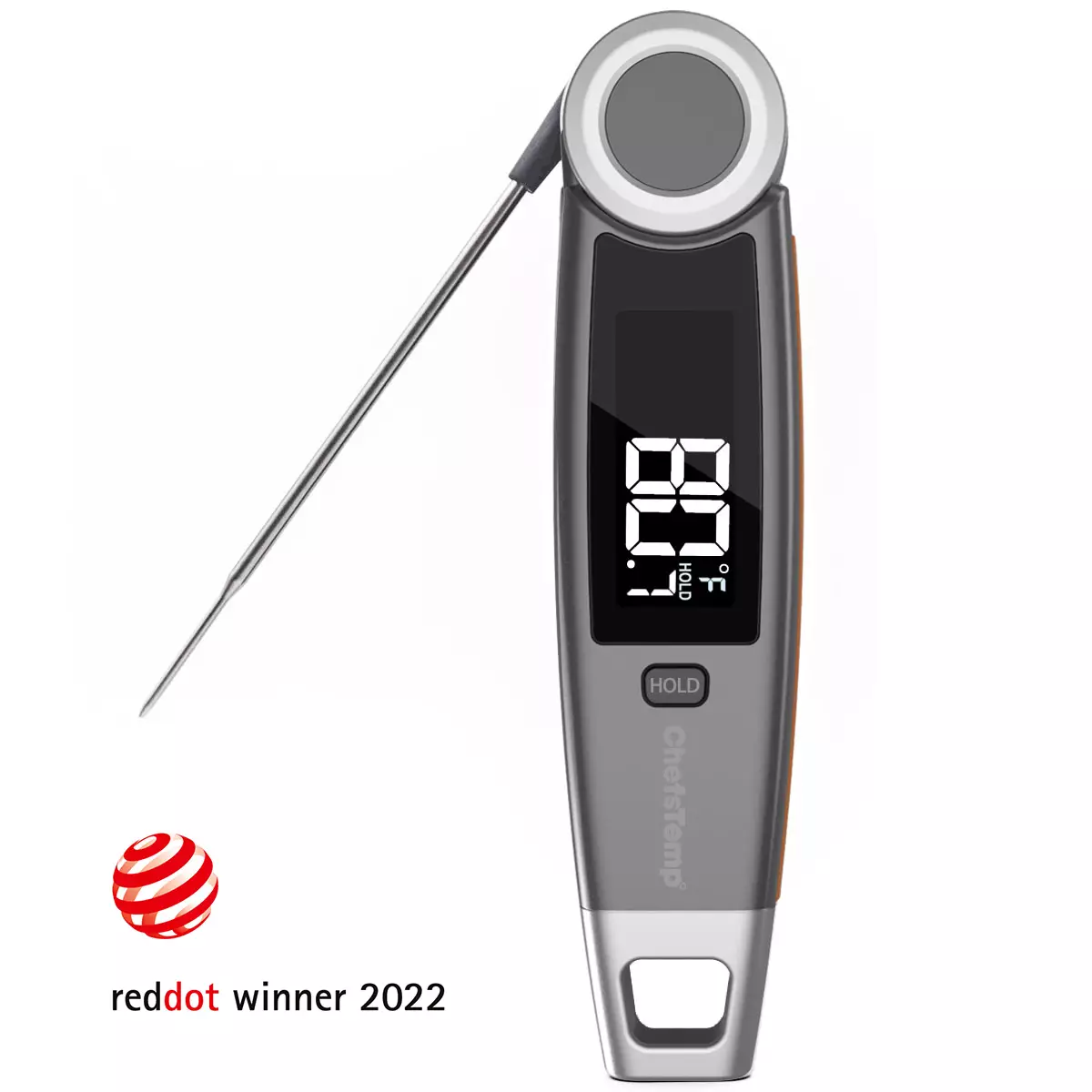
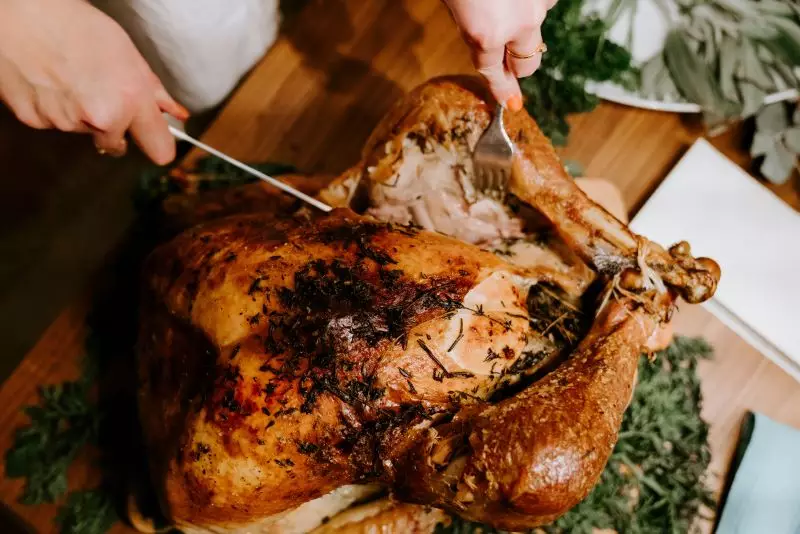
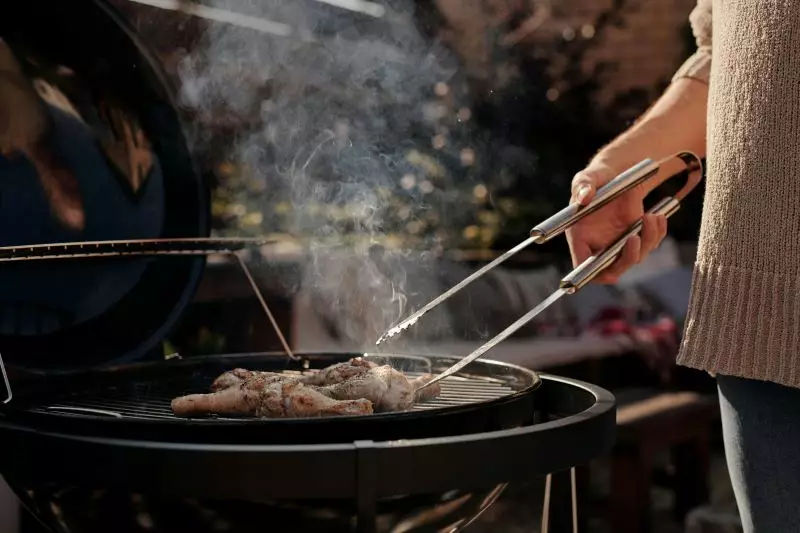
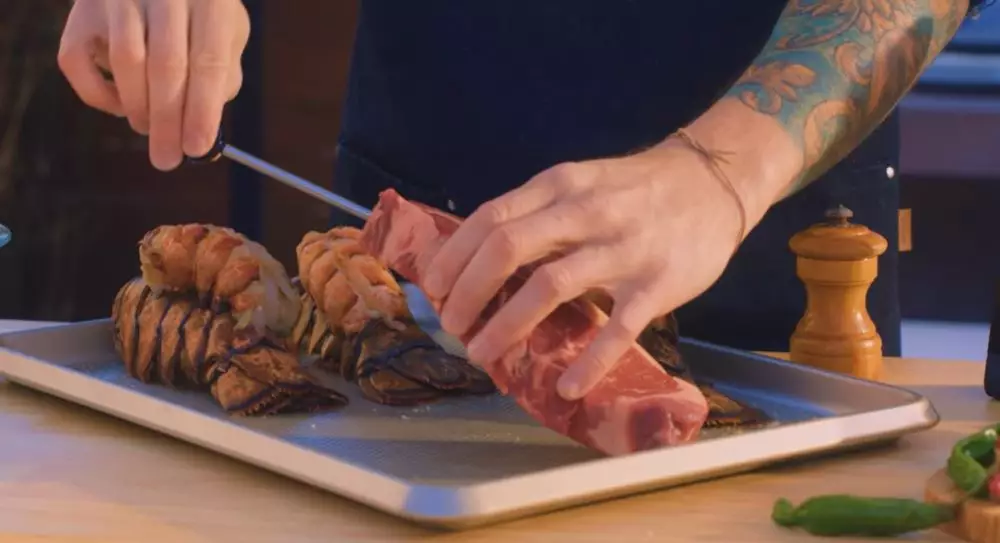
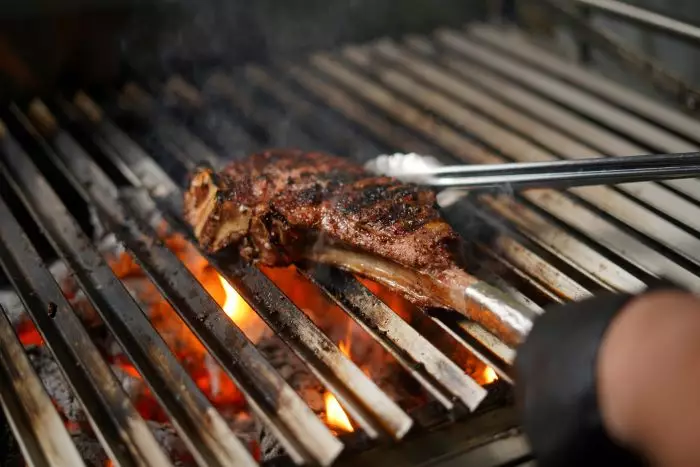
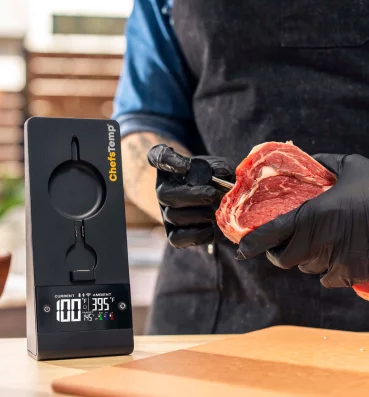


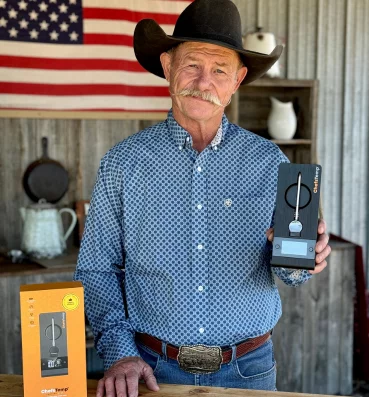
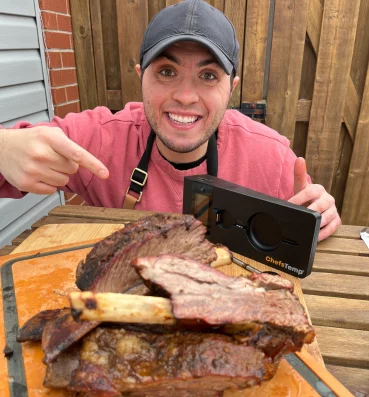
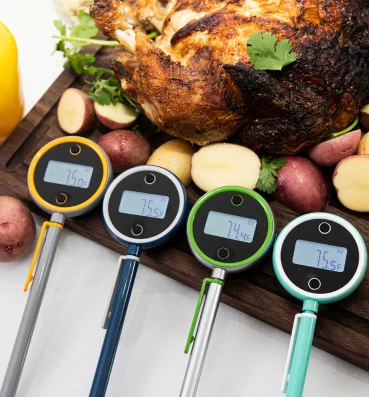
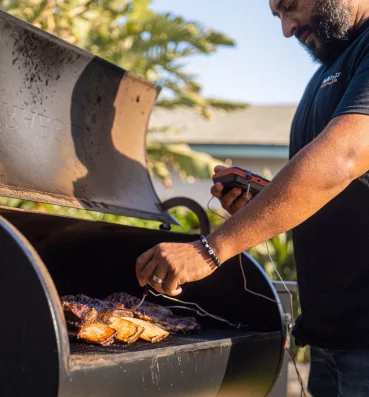
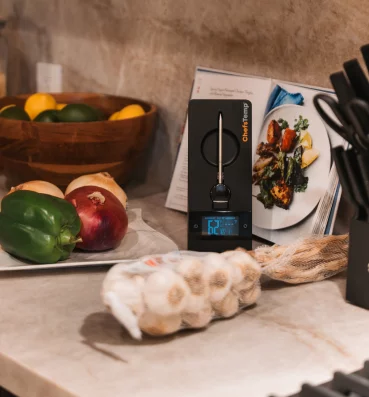

[…] you need to know how far to enter the thermometer into a meal. To guarantee that you are using a food thermometer appropriately, follow these easy […]
[…] it will produce higher readings than its surrounding areas. Thus, the number one rule for using a food thermometer is to insert it into the thickest part of the meat. This is the only way that you can get proper […]
[…] know, that while cooking meat, you need to see the thickest part of the fillet or steak and then use your thermometer to get the right temperature of cooking. So, if you are cooking a complete chicken or turkey, the […]
[…] a digital thermometer is not only for the grill. You can efficiently take it out in the kitchen and check the […]
[…] fish is done by examining its appearance – opaque and flaky on the inside. You can also use other methods for testing the doneness of the fish, even without checking the temperature. For example, you can cut the thickest part of […]